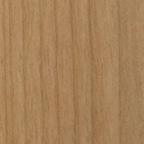 |
 |
Alder (Alnus rubra):
Alder is used extensively for bodies because of its lighter weight (about four pounds for a StratR body) and its full sound. Its closed grain makes this wood easy to finish. Alder's natural color is a light tan with little or no distinct grain lines. It looks good with a sunburst or a solid color finish. Because of its fine characteristics and lower price, Alder is our most popular wood. The tone is reputed to be most balanced with equal doses of lows, mids and highs. Alder has been the mainstay for Fender bodies for many years and its characteristic tone has been a part of some of the most enduring pieces of modern day contemporary music.
Tone-O-Meter™
 |
|
YES |
NO |
|
| Used for laminate tops |
X |
|
|
| Used for bodies |
X |
|
|
| Used for necks |
|
X |
|
| Used for fingerboards |
|
X |
|
|
 |
 |
Ash (Fraxinus americana):
We have two very different types of Ash: Northern Hard Ash and Swamp Ash (Southern Soft Ash).
Northern Hard Ash is very hard, heavy and dense. Its density contributes to a bright tone and a long sustain which makes it very popular. Its color is creamy, but it also tends to have heartwood featuring pink to brown tints. The grain pores are open and it takes a lot of finish to fill them up.
Swamp Ash is a prized wood for many reasons. It is a fairly light weight wood which makes it easily distinguishable from Hard Ash. Many of the 50's Fenders were made of Swamp Ash. The grain is open and the color is creamy. This wood is a very nice choice for clear finishes. It is a very musical wood offering a very nice balance of brightness and warmth with a lot of "pop".
Tone-O-Meter™
 |
|
YES |
NO |
|
| Used for laminate tops |
X |
|
|
| Used for bodies |
X |
|
|
| Used for necks |
|
X |
|
| Used for fingerboards |
|
X |
|
|
|
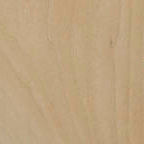 |
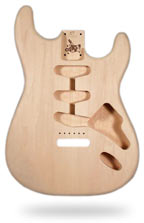 |
Basswood (Tilia americana):
This is a lighter weight wood normally producing StratR bodies under 4 lbs. The color is white, but often has nasty green mineral streaks in it. This is a closed-grain wood, but it can absorb a lot of finish. This is not a good wood for clear finishes since there is little figure. It is quite soft, and does not take abuse well. Sound-wise, Basswood has a nice, growley, warm tone with good mids. A favorite tone wood for shredders in the 80s since its defined sound cuts through a mix well.
Tone-O-Meter™
 |
|
YES |
NO |
|
| Used for laminate tops |
|
X |
|
| Used for bodies |
X |
|
|
| Used for necks |
|
X |
|
| Used for fingerboards |
|
X |
|
|
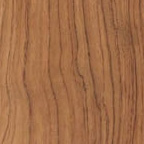 |
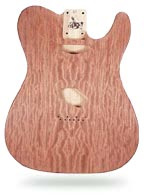 |
Bubinga (Guibourtia demeusei):
A very strong stiff wood used primarily for bass necks and in laminations. Used by Rickenbacker for fretboards and Warwick for bodies. As a bass neck, it provides bright midrange and a thick well defined bottom. Bodies made form Bubinga will be very heavy but will sustain for days.
Tone-O-Meter™
 |
|
YES |
NO |
|
| Used for laminate tops |
X |
|
|
| Used for bodies |
X |
|
|
| Used for necks |
X |
|
|
| Used for fingerboards |
X |
|
|
|
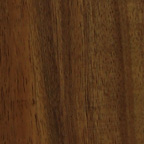 |
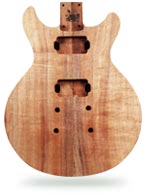 |
Koa (Acacia koa):
This very beautiful wood comes exclusively from Hawaii making supply very limited. Its weight varies somewhat from medium to heavy and is an excellent tone wood for bass guitar bodies. Koa has a warm sound similar to mahogany, but with a little more brightness. Like walnut, this wood may be oiled, but generally will look its best sprayed clear. Koa is sometimes available in flame figure.
Tone-O-Meter™
 |
|
YES |
NO |
|
| Used for laminate tops |
X |
|
|
| Used for bodies |
X |
|
|
| Used for necks |
X |
|
|
| Used for fingerboards |
|
X |
|
|
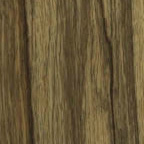 |
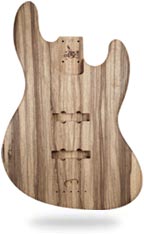 |
Korina, Black (Terminalia superba):
Its true name is Limba from Africa. Black Korina is usually a medium weight wood, but we occasionally get light weight pieces. It features a very handsome olive color with black streaking. Korina has a naturally waxy feel to it. Oil finishes work well on this wood. The tone is very similar to Mahogany with added mids. An excellent tonal choice for hollow chambered bodies!
Tone-O-Meter™
 |
|
YES |
NO |
|
| Used for laminate tops |
X |
|
|
| Used for bodies |
X |
|
|
| Used for necks |
|
X |
|
| Used for fingerboards |
|
X |
|
|
 |
 |
Korina, White (Terminalia superba):
Its true name is Limba from Africa. White Korina is a medium to heavy weight wood Korina has a naturally waxy feel to it. The tone is very similar to Mahogany with added mids. An excellent tonal choice for hollow chambered bodies. With a Vintage Tint Gloss on it, it resembles the famous Korina Flying Vs of the late 50s.
Tone-O-Meter™
 |
|
YES |
NO |
|
| Used for laminate tops |
X |
|
|
| Used for bodies |
X |
|
|
| Used for necks |
X |
|
|
| Used for fingerboards |
|
X |
|
|
 |
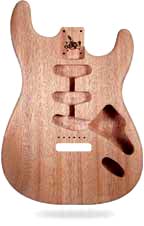 |
Mahogany (Khaya ivorensis):
The African Mahogany is used for body production. It is a medium to heavy weight. Mahogany is a fine grained wood with great musical properties. The tone is warm and full with good sustain. The favorite tone wood of the GibsonR brand name; associated with some of the most famous rock music of our time. Looks good with clear or transparent red finish.
Tone-O-Meter™
 |
|
YES |
NO |
|
| Used for laminate tops |
X |
|
|
| Used for bodies |
X |
|
|
| Used for necks |
X |
|
* Not for bass necks * |
| Used for fingerboards |
|
X |
|
|
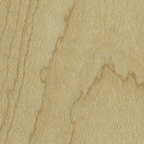 |
 |
Maple(Acer saccharum-Hard Maple):
We offer two types of Maple: Eastern Hard Maple (hard rock maple) and Western Soft Maple (big leaf maple). Hard Maple is a very hard, heavy and dense wood. This wood is used for necks. The grain is closed and very easy to finish. The tone is very bright with long sustain and a lot of bite. It looks great with clear or transparent color finishes.
Tone-O-Meter™
 |
|
YES |
NO |
|
| Used for laminate tops |
X |
|
|
| Used for bodies |
X |
|
|
| Used for necks |
X |
|
|
| Used for fingerboards |
X |
|
|
|
Soft Maple (Acer macrophyllum):
It is usually much lighter weight than Hard Maple but it features the same white color. It has bright tone with good bite and attack, but is not brittle like the harder woods can be. Our flame (fiddle-back) and quilted bodies are Western Maple. This type of maple works great with dye finishes.
Tone-O-Meter™
 |
|
YES |
NO |
|
| Used for laminate tops |
X |
|
|
| Used for bodies |
X |
|
|
| Used for necks |
|
X |
|
| Used for fingerboards |
|
X |
|
|
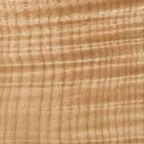 |
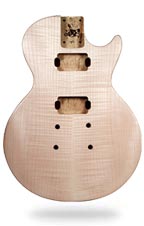 |
Flame Maple (Acer macrophyllum-Pacific Maple):
Flame, Fiddle-Back or Tiger maple all generally refer to curls (or stripes) as illustrated here. Flame can be tight, wide, straight or crooked. While it can be supplied solid 1-piece or 2-piece flame bodies, this wood is most beautiful in the form of a bookmatched laminate top.
Tone-O-Meter™
 |
|
YES |
NO |
|
| Used for laminate tops |
X |
|
|
| Used for bodies |
X |
|
|
| Used for necks |
|
X |
|
| Used for fingerboards |
|
X |
|
|
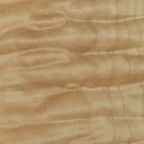 |
 |
Quilted Maple (Acer macrophyllum-Pacific Maple):
Quilted maple is a more rare form of figure occurring mostly in western maple. It is distinguished by its billowing cloud or even popcorn appearance. This figure can vary from large, wide billows to tight small blisters. As with flame, quilted maple is most often used as a bookmatched top, but is sometimes available as 1-piece or 2-piece solid bodies.
Tone-O-Meter™
 |
|
YES |
NO |
|
| Used for laminate tops |
X |
|
|
| Used for bodies |
X |
|
|
| Used for necks |
|
X |
|
| Used for fingerboards |
|
X |
|
|
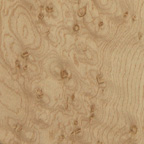 |
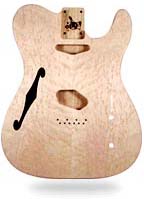 |
Birdseye Maple (Acer saccharum-Hard Maple):
This figure is only found in the eastern hard maple trees. Birdseye does not usually run deep in the boards, so solid bodies are not available. As a bookmatched top it can be quite striking.
Tone-O-Meter™
 |
|
YES |
NO |
|
| Used for laminate tops |
X |
|
|
| Used for bodies |
|
X |
|
| Used for necks |
X |
|
|
| Used for fingerboards |
X |
|
|
|
 |
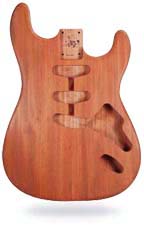 |
Padouk, African (Pterocarpus soyauxii):
Bright vivid orange color which oxidizes to a warm brown with use. This waxy feeling wood has an open grain texture similar to rosewood and a tone similar to maple with great mids and attack. This is a heavy to medium weight wood that looks great with an oil finish or clear gloss!
Tone-O-Meter™
 |
|
YES |
NO |
|
| Used for laminate tops |
X |
|
|
| Used for bodies |
X |
|
|
| Used for necks |
X |
|
|
| Used for fingerboards |
|
X |
|
|
 |
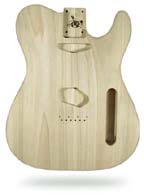 |
Poplar (Liriodendron tulipifera):
This is another standard body wood having been used by many companies over the years. Due to the grey/green color, this wood is used mostly when solid color finishes are to be applied. Its weight generally runs about one half pound more than Alder. Tonally, it is similar to Alder as well. Poplar is a closed grain wood that accepts finish well.
Tone-O-Meter™
 |
|
YES |
NO |
|
| Used for laminate tops |
X |
|
|
| Used for bodies |
X |
|
|
| Used for necks |
|
X |
|
| Used for fingerboards |
|
X |
|
|
 |
 |
Indian Rosewood (Dalbergia latifolia):
A gorgeous exotic wood with rich thick grain covering a range of colors and patterns. These bodies dominate the heavy wood category with solid StratR bodies always weighing in at well over 6 lbs. Specifying construction as hollow or chambered build is always a good idea if you're weight conscious. Finishes can be a little difficult to apply with the oily nature of the wood. You can expect big warm tones from rosewood with smooth high end roll off. Indian Rosewood TeleR bodies were made popular in the 70s by George Harrison of the Beatles
Tone-O-Meter™
 |
|
YES |
NO |
|
| Used for laminate tops |
X |
|
|
| Used for bodies |
X |
|
|
| Used for necks |
X |
|
|
| Used for fingerboards |
X |
|
|
|
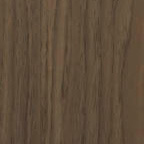 |
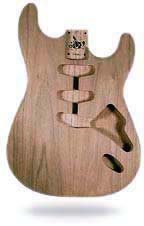 |
Walnut (Juglans nigra):
Luxurious coloring and grain patterns are the earmarks of Walnut. Whether using an oil finish or a deep clear gloss, the pleasing appeal of Walnut always delivers. This is an open grained wood. Walnut is in the heavy weight category but it's not quite as heavy as hard maple. It has a similar sound to hard maple but it tends not to be as bright.
Tone-O-Meter™
 |
|
YES |
NO |
|
| Used for laminate tops |
X |
|
|
| Used for bodies |
X |
|
|
| Used for necks |
X |
|
|
| Used for fingerboards |
|
X |
|
|
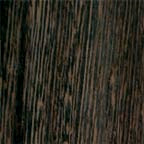 |
 |
Wenge (Millettia laurentii):
Wenge features black and chocolate brown stripes. It is usually quartersawn to yield straight grain - similar to open grained Zebrawood, but black. This body is in the heavy weight category so considering it as a hollow or chambered build is beneficial if you're weight conscious. Its weight does offer plenty of sustain though. Oil finishes are most popular on Wenge but you can also leave them unfinished as well. The tone is balanced with great mid presence and attack. This is a popular wood for boutique bass builders and its tonal reputation is impressive.
Tone-O-Meter™
 |
|
YES |
NO |
|
| Used for laminate tops |
X |
|
|
| Used for bodies |
X |
|
|
| Used for necks |
X |
|
|
| Used for fingerboards |
X |
|
|
|
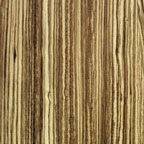 |
 |
Zebrawood (Microberlinia brazzavillensis):
You may see where Zebrawood gets its name. The distinctive look tells you it's none other than Zebrawood! This open grained wood is very heavy so it's primarily used as a bookmatched laminate top. When used as a body its tone is similar to maple.
Authority: Warmoth custom guitar parts
|